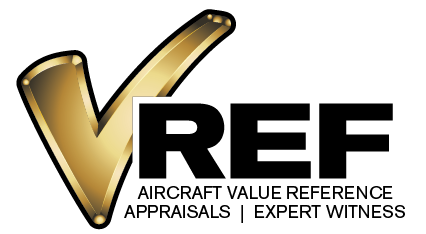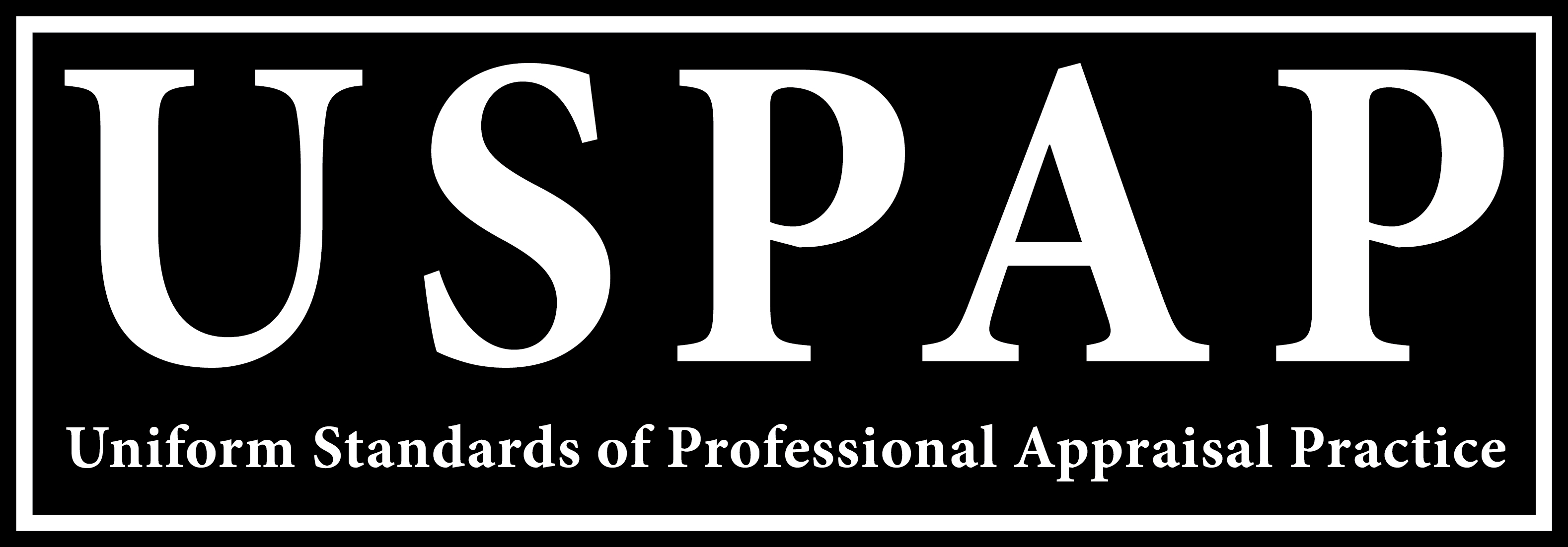It’s the end of 2019, and this is our last newsletter of the year. Snow has fallen on the upper Midwest, and both winter and the holiday season is upon us. It is a time for reflection and giving thanks, and at VREF, we want to extend a thank you to all of our loyal clients. As you all know by now, the new platform is here. It has been a complex project from the start, and it is only the beginning. As we enter 2020, more new features and products will continue to be released.
VREF’s new software platform is the beginning of numerous new product announcements. While we are not ready to let the cat out of the bag just yet, rest assured our commitment to both our loyal client base and the aviation industry is substantial. We will continue to reinvest in our software and augment our services.
Before we recap our year-end market and set the expectations for 2020, I want to reflect on some of the more significant and more impactful events of 2019. Aviation is a fantastic industry, with equally impressive people who shape the world we live in by literally sacrificing their lives to not only make ours better but safer. This past year has had its fair share of challenges and success stories, from the now-infamous fleet grounding of the Boeing 737 Max to the certification of Garmin’s new Autoland feature for incapacitated pilots the world is once again paying close attention to aviation. This past year had its ups and downs, especially in politics. We are coming upon yet another election year, and for many of us, we never really seem to have gotten past the last one. The general aviation markets witnessed another record year with valuations on singles, trainers, and light sports seeing no end to appreciation. We were saddened to learn Mooney, once again on the brink of recovery, laid off its staff and appeared to be closing the doors. On the business jet side of the market, transactions through the first six months of the year were above expectations with buyers and their lenders happy to shake off any residual effects from the never-ending political battlefield. Over the last 11 months, there have been over 4900 transactions, and that is slightly better than the same period from one year ago. The turnout at EAA in Oshkosh was beyond our expectations, and the piston sales were strong well into the fall. Likewise, NBAA, which many uses as an indicator of what’s to come, was also busy. For the first time since the mid-2000’s people were filling the halls of the convention center and the static display of aircraft had consistent traffic, and numerous people trying to get into the OEM exhibits. We saw the release of Gulfstream’s new G700 and some pretty cool technology like IS&S ThustSense auto-throttles for King Air B200 and 300’s. The new Pilatus PC12NGX was released, which is proof you can make the best turboprop even better as it will come with the PT6A- E series powerplant. If you missed the new Thales wearable HUD, definitely check it out as it features a full color, 360-degree field of view, and it can be coupled with any enhanced vision system. There were plenty of eVTOLs with the Bell Nexus grabbing much of the attention. Epic Aircraft, after a long delay, finally received FAA certification, and VREF will be adding them to the database. NBAA was also a place for new topics to be brought to the discussion table, and Cyber Security was at the forefront. We tend to forget that with every innovation comes a potential for increased threats, attacks, and malicious behaviors. VREF has been developing a Cyber Security team for the past year, and we will be releasing the first-ever assessment plan in 2020. If you are worried about your aircraft and your infrastructure and how to prevent threats, then you will be excited to learn about our new consulting service. If you think it will never happen to you or your aircraft, think again. Satcom Direct is reporting over 81% of the planes subscribing to their Threat Monitoring Service has experienced an attack. These events are persistent and getting more sophisticated, so don’t be a victim. Stay off open networks and consider turning your phone off while in airports and other high traffic public network areas.
2019 was also the year of 2020 compliance, a headlining topic that had many reacting like Y2K (if you are old enough to remember, if not google it). VREF had its fair share of phone calls, and emails, and we were extremely vocal about not ignoring the deadline. Now that the deadline is almost here, would it surprise anyone that there is still a bunch of aircraft without ADS-B Out?
I keep hearing the deadline will be extended. Will the January 1, 2020 deadline be moved?
Answer: The January 1, 2020 deadline will not move. The FAA encourages owners to equip as soon as possible to capture the benefits of ADS-B and to ensure they will be able to access all available airspace once the mandate becomes effective in 2020.
Question: What will happen if I wait until after the deadline to equip?
Answer: The ADS-B Out rule allows a mechanism for pilots/operators without ADS-B Out equipment installed to request ATC authorization to deviate from the rule to access ADS-B Out rule airspace. The FAA published a policy in 2019 with guidance on how controllers will handle these aircraft. The policy is clear that unequipped aircraft cannot expect uninterrupted access to ADS-B airspace.
We have been tracking the part outs and have counted well over 300 business jets removed from service and scrapped or salvaged. Most of these aircraft simply no longer are functional, they are either too expensive to operate, or parts are hard to find. All of them had cockpits with antiquated avionics, and unfortunately, getting your Betamax to speak Blu-ray is even harder when it involves avionics equipment (another bad tech joke sorry). The question we are asking is, what that number will grow to by the end of the 1st quarter 2020? If the technology or the lack thereof is creating a need to upgrade your equipment, rest assured you are not alone. It is the end of CRT screens as well; current production will end in 2020 (Toshiba is planning to close down its last plant). We believe there will be a continued shortage of like-new pre-owned aircraft as buyers continue to look for replacements due to functional obsolescence.
2020 will be the year of the connected aircraft and significant data requirements.
We are living in the golden age of technology. For those who doubt where we are headed, we should consider that with 5G bandwidth, alternative powerplants, single-pilot aircraft, unmanned aircraft, and a new space program that we as a global aviation community have a lot to look forward to soon. I often sit back to reflect about how far we have come in such a short period and how so many young children look up at the sky with amazement and see those contrails as a future sign of a career path into aviation. It reminds me of when I was a kid and would stare out the window of an airliner trying to figure out how in the world it got off the ground ( I often still do). Remember to pass along your knowledge, mentor, and help those just getting into the industry. If we don’t pass it on, no one will!
Market Updates
Overall the general aviation markets have been stable; few surprises were seen in terms of overall pricing. There have been no changes in terms of buyer sentiment or buyers obtaining financing. Lenders in the single-piston market are reporting no changes, and everyone is reporting business activity is higher than usual. The Business Jet markets are another story, one that is conflicted between new technology and pre-owned aircraft sales. It appears that consumers are starting to look at aircraft more like consumer electronics and buying the newest or latest and greatest direct from the OEM and skipping the pre-owned offering. Overall, 2019 has been somewhat back to the old “normal.” This current market is as close as we have come in almost a decade to experience an active and stable market environment. New deliveries are at the highest point since 2010. While the summer slowdown in business aviation came back, the activity levels in the piston market were anything but slow and continue its manic pace through the holiday season.
Overall Business Jet market activity continues to slow with fewer transactions and more inventory for sale. Retail transactions in Q3 were down 17% compared with Q2 and down 15% from Q3 2018. Very light and mid-size jet transactions remained relatively flat in Q3 2019 compared with Q3 2018, while large and light jet transactions were down ~20% and super mid-size transactions down ~40%. On a YTD basis, retail transactions are down 19% compared with 2018 YTD. All cabin size segments are down 20 – 25% except for light Jets, which are only down 10%.
Currently, 10% of the in-operation fleet is for sale, which is 1% higher than this time last year. Of the business jets for sale, 73% are based in North America (64% in the United States, 5% in Mexico, and 4% in Canada and the Caribbean) 13% are based in Europe, 6% in both Asia and South America, and the remaining in Africa and Australia.
When looking at the age of the aircraft for sale, 20% is ten years old and younger, 36% are 11-20 years old, 19% are 21-30 years old, and 25% are more than 30 years old. More than half of the 30+-year-old aircraft for sale are not equipped with ADS-B.
Speaking of ADS-B, 82% of the worldwide business jet fleet is equipped. Of the aircraft that are not equipped with ADS-B, 61% are 30+ years old, which is approximately 2500 aircraft. A little more than 2000 of those 30+-year-old aircraft not equipped are mid-size or smaller, which means the aircraft value may not be enough to substantiate the investment in the ADS-B upgrade.
Piston Single: Appreciation is the word, and it’s a broken record. Cessna 172’s, Piper Arrows and Archers, Diamond 40’s, Beechcraft Bonanza’s are stable, consistent, and still going up. Older 172’s like the P model are up just shy of 19% this year. The same holds for the Archers’s, and if while the newer aircraft are flat, the aircraft built earlier than 2005 are up once again with a 3.45% gain in value since last quarter. DA40’s are flat and remain unchanged since last quarter.
Piston Trainer: The demand for worldwide training and training aircraft is at an all-time high! This training demand is having a significant impact on the availability of new and used training aircraft (Cessna 172s and Piper Seminoles, to name a few). VREF has observed an increase in demand and pricing.
Helicopter: The piston helicopter market remains active, and with almost six weeks left in the year, the number of transactions is relatively close to what closed in 2018. Robinson models are flat from Q2 to Q3, and there is no change expected. With less than 6% of the total fleet for sale, it continues to be a seller’s market.
Turbine helicopters are another story as the United States markets attempt to make up the slack from Europe, there have been 850 turbine helicopters delivered in 2019, and twin-engine supply for sale decreased 19% compared to the same period last year. The single light market is active the H130, Bell 505 dominates the new deliveries, and the AS350 B3 has remained popular on the pre-owned market with pricing flat through the 4th quarter 2019.
Airbus continues to out deliver the competition in the light-twin engine segment, and the EC135/145 market continues to dominate the pre-owned activity. Aircraft remain values remain unchanged, as market demand is stronger than the current supply.
Leonardo’s 109’s are still soft, and the prices have dropped in the Q4 update.
Similar to the 109 markets, the Bell 429 market continues to be soft, with few transactions reported.
The Leonardo AW139 is still the most popular medium twin in the pre-owned market, and supply was down from the same time frame last year. Pricing is down from Q3, but the good news is that Leonardo recently delivered its 1,000th AW139.
The Bell 412 market remains soft and unchanged from Q3.
The Airbus H155 market has also softened as pricing has struggled to maintain, pricing is down from Q3.
The Sikorsky S76C+/C++ market was also flat in Q3. Pricing is down from the last quarter.
The Airbus H225 has improved since last quarter in terms of activity, but pricing is down from the previous quarter. Pre-owned aircraft are taking longer to resell, and pricing is still under pressure.
The S92 market saw its first preowned transaction in five years, and there are reports of several more, which is good news for a market that this time last year had no bottom.
Large Jet: This segment consists of the older Challenger 601’s, Falcon 50’s, 900’s and Gulfstream GV, and older 550’s. Technology and upgrading are getting more complicated for this aging fleet. Numerous aircraft from each manufacturer have been parted out. Aircraft values can fluctuate depending on the avionics panel, cabin, and engine status. Aircraft needing 2020, engine maintenance, and heavy airframe maintenance are getting removed from service. The Falcon 50’s remain flat with no change since last quarter. It remains a buyers market, and aircraft are regularly trading. Older Challengers are performing similar to how they were this time last year. With one exception, it’s taking longer to sell them. Falcon 900’s have had no change since last quarter. GV’s are flat, and this market remains unchanged.
Late Model Large Jet: This segment of the market was once an indicator for the rest of the business jets, but that is no longer the case. Pricing of late-model Gulfstream G500 and G600 aircraft is holding asking prices; based on all reported closings and funding transactions, there is a little fluctuation between deals. Pricing variation continues to be found on the equipment list ordered. New delivery G550’s and 650ER’s are coming on average below the official ask price. This should not be a surprise as the newer models are available, and taking potential buyers with them New Embraer Legacy 650 pricing is down roughly 15% new asking. New Praetor pricing is holding to asking price and remains flat and unchanged. Bombardier has reported a healthy backlog on the Global 7500, and that they will hit their target of 150 new deliveries for 2019. The Global 6500 and 5500 are also demanding top dollar and selling for the full asking price. The Global 6000 saw a 33% correction based on late aircraft deliveries, and asking prices are higher than actual closings. Citation Latitudes also had a correction this quarter as new aircraft are closing below asking prices. Three-year-old Latitudes and older aircraft remain flat and unchanged.
Late Model Light Single: Cirrus SR22’s are stable and flat from last quarter, market demand is high, and buyers show no sign of slowing down. The same is true for the Diamonds and Cessna’s.
Late Model Mid-size Jet: The Challenger markets are under pressure, same story different manufacturer. As new deliveries continue to increase on the 350 side, the pre-owned market prices drop, only due to the pricing being offered for new aircraft. Challenger 350 new deliveries remain strong, and there is still demand for the CL 650. Technology leaps and aging platforms rarely due well as a combination. Falcon 2000 pricing is flat from last quarter. The Gulfstream G280 market is down across the board as new aircraft are being discounted.
Light Jet: The light and very light jet market have performed well on the new aircraft delivery side, with the Phenom 100, Cirrus Vision, and Honda Jet all delivering a combined 120 aircraft. Pricing for the 100EV is down from last quarter, and older 2020 compliant airframes are flat. Flat pricing is also the case with the Cirrus Vision, who brought out the G2 version earlier this year. The Honda Jet pricing is down across the board as more aircraft have been coming onto the market for resale.
Mid-size jet: Numerous aircraft, once considered the backbone of business aviation is struggling to attract buyers. The Hawker 800A, XP’s, and 850s are all in a buyer’s market. Pricing is down across the board as more aircraft are put on the market for sale. The Citation Sovereign pricing is stable, and inventory levels demonstrate buyers are more interested in already compliant and upgraded older Sovereigns as the Pluses are down from last quarter. As is the case with many business jets, slightly used aircraft are under pressure from brand new deliveries. The Lear 60’s and 45’s are also seeing pressure and are down from last quarter. Aircraft inventory levels are up almost twofold from this period last year.
Piston Twin: The twin-engine pistons like Baron’s, Cessna 340A’s, 414’s, and 421’s are all seeing improvements from a year ago. What was seen as a depressed market has attracted buyers again. Available inventory is down across the board, and pricing has gone up slightly. We expect this trend to continue as buyers looking for business aircraft are attracted to the bang for the buck.
Turboprop: Pre-owned aircraft are demonstrating stable and normal market conditions. The average days on the market are down from the same time a year ago. King Air B200’s are showing a healthy market condition, and pre-owned inventory is up slightly from one year ago. King Air 350i’s are another story with the pre-owned inventory at 4% compared to just over 1% from a year ago, prices are down from last quarter, and there is pressure on the 350 markets due to the new aircraft discounting. Avanti has settled down after a year of pricing pressure. The II’s inventory is down from a year ago, and as we head into 2020, the values should remain stable. Pilatus is still the darling child in the single-engine turboprop market. There are few aircraft available on the pre-owned NG market, and new aircraft deliveries remain strong. Cessna Caravans are still commanding top dollar as well as demonstrating a sharp decline in available inventory and
As a by-product of being in a seller’s market, excellent condition aircraft are demanding a premium.
UAV/UAS/DRONE: The pricing for in-production commercial UAV’s will be added to the new VREF Online platform in early 2020.
Airbus flew its VSR700 for the first time in early November, derived from the Guimbal Cabri G2; it can carry up to 1000 kg and can carry full-size sensors.
UAS/Drone Ready or Not: UPS Flight Forward received the first full FAA Standard Part 135 Air Carrier and operator certificate for commercial unmanned drone deliveries by a dedicated drone delivery company.








